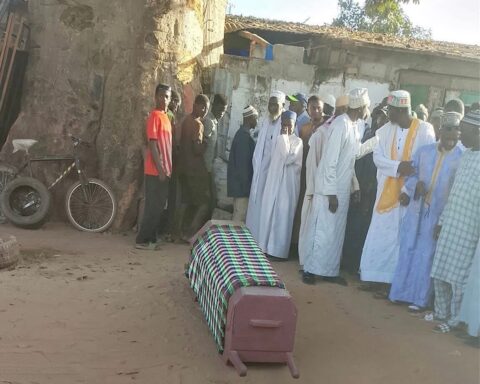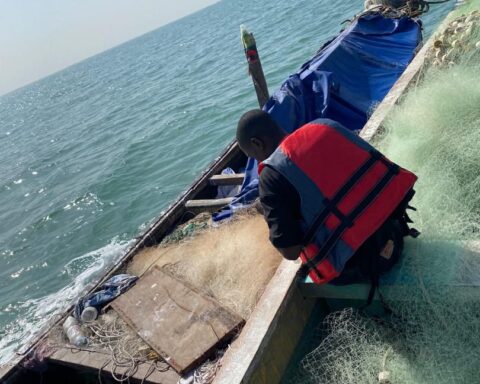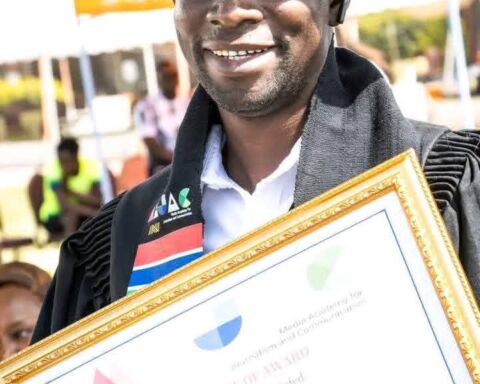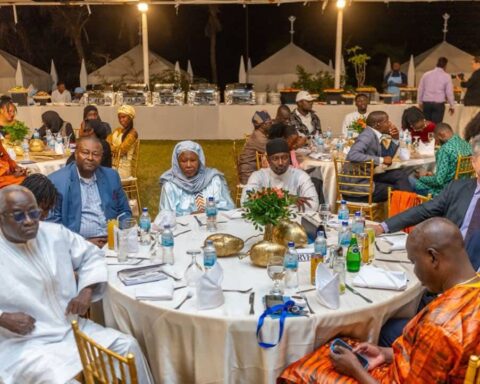OPINION
By Kebba Nanko, Director of Policy, PPP
When President Adama Barrow stood before Gambians and regional leaders in October 2021 to inaugurate the OMVG Soma Sub-Station, his words were filled with pride and optimism. He spoke of cooperation, integration, and the promise of delivering electricity to every Gambian household by 2025.
But while we celebrate this milestone, we must also ask: where did this journey begin? The truth is that the roots of rural electrification in The Gambia stretch back nearly five decades, to the visionary leadership of Sir Dawda Kairaba Jawara and the People’s Progressive Party (PPP). What we see shining across rural communities today is not a sudden achievement, but the fulfillment of a dream born in the 1970s.
In June 1976, Sir Dawda and President Léopold Sédar Senghor of Senegal signed the landmark OMVG agreement, creating the Gambia River Basin Development Organization (OMVG). This was no ordinary treaty. It was a bold vision to harness the power of the Gambia River, to light up rural villages, and to weave our small nation into a stronger regional fabric. By 1978, Sir Dawda had expanded this vision to include Guinea and Guinea-Bissau, transforming OMVG into one of Africa’s most enduring partnerships for sustainable energy.
The Soma Sub-Station, which today channels power from Guinea’s Kaléta and Souapiti hydroelectric plants, is not simply a piece of infrastructure. It is the physical proof of foresight — the very foresight that PPP laid down when others could not even imagine rural households flicking on a light switch. This is why every lamp in Soma, every clinic powered in the provinces, and every schoolchild studying under electric light owes its origin to that vision.
Yet, some in our present government have made assertions that today’s administration alone is responsible for rural electrification progress. Such claims are not only misleading; they erase the sacrifices and diplomatic triumphs that made these projects possible. Without the 1976 OMVG framework, there would be no regional energy network. Without the 1978 expansion, there would be no access to Kaléta and Souapiti’s power. Without Sir Dawda’s leadership, there would be no long-term financing from institutions like the World Bank and the African Development Bank.
To give all the credit to the current administration is to deny history. Yes, the Barrow government has played a role in implementation — and that deserves recognition. But without the foundations laid by Sir Dawda and the PPP, the scale of electrification we see today would never have been possible. What is happening now is not a new beginning, but the flowering of a seed planted almost fifty years ago.
This is not mere political rhetoric. History bears witness. At a time when Senegal resisted Guinea’s participation in OMVG due to political differences, Sir Dawda rose as a statesman. He understood that regional energy integration required unity, not division. As historical footage shows, he officially invited President Saikou Touray of Guinea to join OMVG while serving as Chairman. That decisive act ended a dangerous rift and secured Guinea’s place in the partnership — a decision that today allows Gambians to benefit from Guinea’s hydroelectric power. This is the kind of leadership that does not chase headlines, but shapes history.
The world has not forgotten. In 2017, OMVG officials traveled to Fajara to honor Sir Dawda as the co-founder of one of Africa’s most important energy integration projects. Their words to him and to The Gambia were powerful: “The initiative you brought into the world has matured into a major pillar of sub-regional development.”
That recognition was not just for Sir Dawda — it was for The Gambia, and for the PPP that dared to dream big when our nation was still finding its footing.
Today, as electricity spreads across our rural communities, it does more than power homes. It powers hope. It fuels enterprise. It strengthens schools and health clinics. It transforms villages into hubs of opportunity. Every light that shines in rural Gambia is a glowing reminder of a legacy of foresight, diplomacy, and dedication to national progress.
The PPP does not deny the role of the current government in advancing implementation. But history demands fairness: without the vision of Sir Dawda Kairaba Jawara and the PPP, there would be no foundation for the progress we celebrate today.
Every bulb that flickers to life in rural Gambia is a testament. It tells us that legacies matter, that foresight outlives politics, and that true leadership lays foundations for generations to build upon. The story of rural electrification in The Gambia is, in every sense, the story of a vision fulfilled — a vision born in 1976, nurtured by the PPP, and now shining across our nation.
The views expressed in this article are the author’s own and do not necessarily reflect The Fatu Network’s editorial stance.






